Some of Bob's earlier Computer Projects
From the Olden Days when the PC was still in the $5000 range. Nowdays you can find 286's in the trash.
The first Z80 project
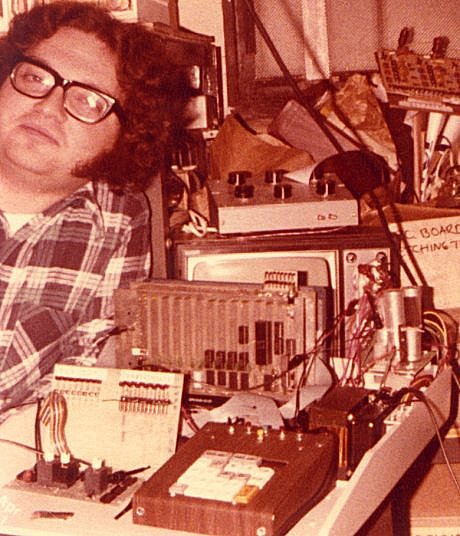
For some reason, most of those Instamatic pictures turned red. Can't blame the sideburns on the camera. The conglomeration shown here is the first Z80 computer. No CRT, no disk drive, no printer, just a hex keypad to enter some short Z80 code, and a set of LEDs to display the output. Not Windows compatible, not even Peepholes compatible.
Some of you may recognize part of the Heath (H88?) computer. I had started a correspondence course with an outfit which will remain unnamed. They became very lax in sending the materials, and I got a nasty letter when I mentioned it. I sent the letter to the president of the outfit, and the course was canceled, so I didn't get stuck.
All they had sent was the base and the power supply, which I built this unit on. Not the most useful computer, but I designed & built it all by myself.
Also visible in the upper-right corner is part of a PC board assembly based on the Heath Jaguar Combo Organ. Worked pretty good. On top of the TV set is a resistor substitution box.
CPU3 project
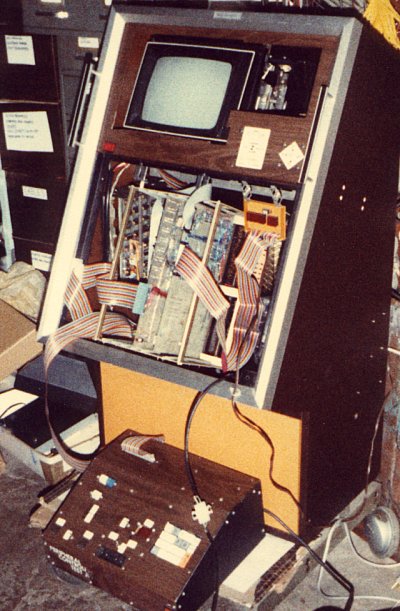
This was a more ambitious project. It was centered around a Z80 CPU board and an interface board, located in the card cage. To the left of the card cage was a TVT (TV Typewriter) board which fed the monitor. Next to the monitor are the TVT cursor buttons. There is also a hex LED display for the data and address busses. The box near the bottom is a DMA box.
Packaging a Timex computer.
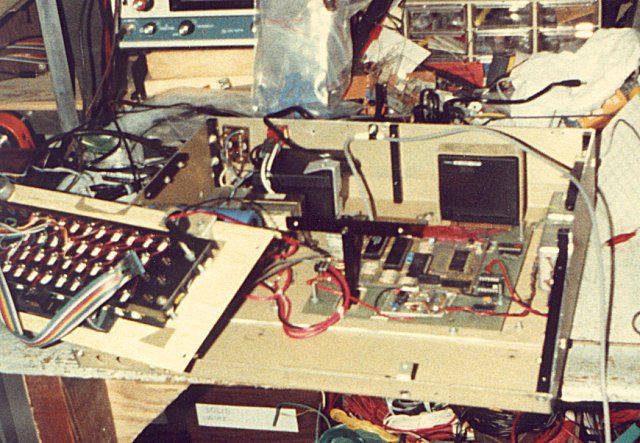
I'll admit it - I owned the original White Sinclair ZX-80 and a Timex ZX-80. I'll even go so far as to admit buying the 16K RAM module AND the printer. There, I've said it.
The Timex people also made a mistake - they put solder on the contact pins on the expansion interface. Ruined every one. I took a board with gold plated fingers, and wired the Timex board onto it, along with the CWSS circuitry which would pick up CW signals, and display them as regular text. That's about the only thing it could do. Like many others, I also wired up a real keyboard, but never found a good use for it. I'd have been better off buying an Edsel.
Clone 1 computer
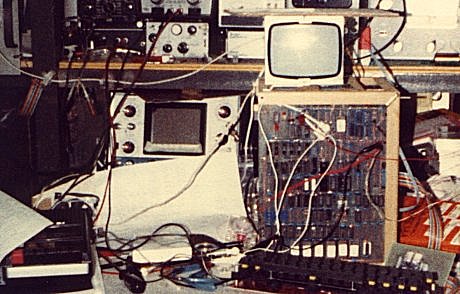
To quote a certain computer magazine: "It is not practical to build a computer completely from scratch."
Sounds like a challenge to me. The Radio Shack Model 1 was a very good beginner's computer. It didn't have much - just 16K of memory, and an uppercase-only B/W display with crude graphics. It was easy to use, and easy to copy. Well, I didn't copy it exactly. I used the newer octal bus drivers and eventually static RAM, which cut down the parts count dramatically. The store-bought machine was fine, except that the cheapie power switch would turn itself off at the worst possible times. I had built my own printer interface, then added a simple plotter interface, MIDI, parallel I/O ports, and an EPROM programmer. I didn't want to risk damaging the store-bought computer, so I built several. The biggest challenge was the character generator ROM. I figured out how theirs worked, then I drew up the bit patterns required for each ASCII character, then figured out the data which needed to be burned in. I wrote up a quick BASIC program to burn the EPROM, and let the machine pretty much copy itself. The clones were actually more reliable than the original.
It is practical to build a computer from scratch. You can learn a lot that you can't learn in textbooks, especially if it doesn't run the first time. This one didn't, but the others did.
On the shelf above the 5" Heath scope, in a small grey project box is a tiny scope I built
around a 1DP1 CRT. Except for the B+ rectifiers, it's all tubes. Someday, I'll redesign in in
solid state, and repackage it.
Clone 3 computer
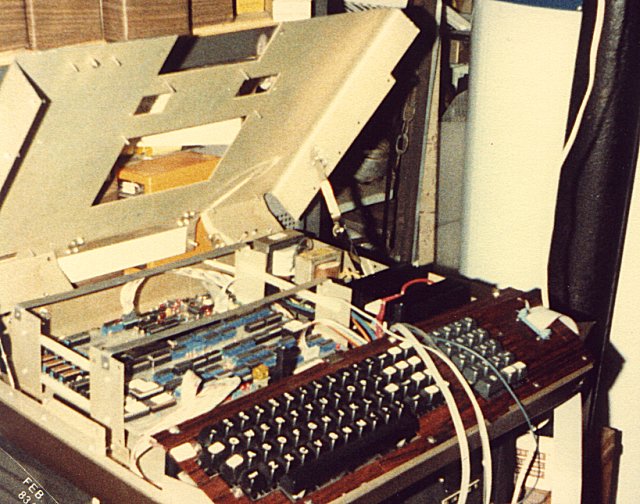
The Clone 3 computer was built into a clamshell case, which made it a little more presentable. Another one was built into a portable case, complete with the monitor. This one also had an EPROM socket, which would dump the EDTASM editor program directly into RAM - faster than any disk. I did a good amount of Z80 machine language with that setup. There was also a bigger EPROM programmer (also not shown) which would handle 2708 through 2764 devices. This unit was capable of copying directly between EPROMs.
Front page